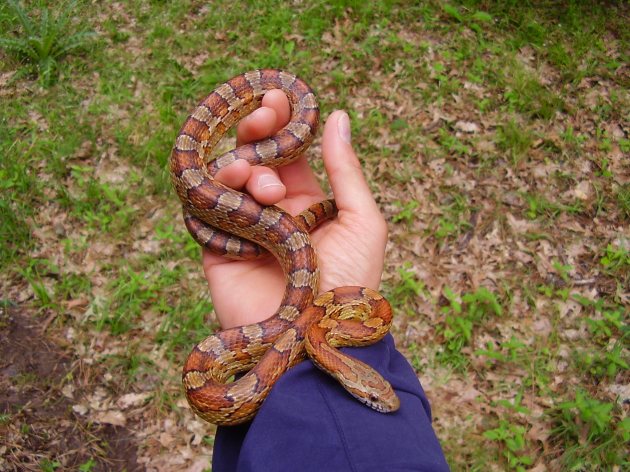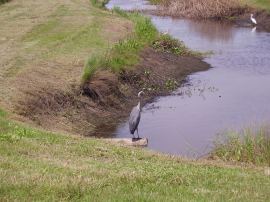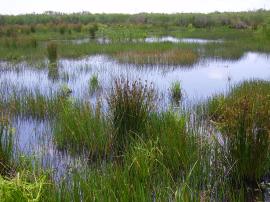
Original Walton store. The pickup in front is Walton’s model, but his actual truck is displayed securely indoors. Click to enlarge.
What would become Wal-Mart began as Walton’s Five-and-Dime store. Sam Walton opened the store on the town square in Bentonville, AR in 1950. Walton built a comparatively small regional chain of discount stores over 20 years. While the business was successful, it was supported by a huge debt load. The debt weighed on Mr. Walton as a terrible burden. Sam decided to take the company public, as the stock sale would raise enough cash to pay off the debt and allow for large-scale expansion. Wal-Mart became one of the best-performing stocks of the 1970’s – 1990’s. The stock’s steady growth enriched many employees beyond their dreams, building nest eggs in the tens and hundreds of thousands, even millions, for store associates and managers alike. Walton had an explicit policy of making his employees financial partners. He didn’t see any other way to build a successful business. Walton was publicly critical of execs who did otherwise, and who lived what he thought were excessively lavish lifestyles.

Bentonville, AR Town Square, across the street from Walton’s Five and Dime. Click to enlarge.
Wal-Mart is vilified today, but things might be different if Sam still ran the company. He died of cancer in 1992. In his book, Made in America, he stated that a month into retirement (forced by the cancer), he had a feeling that his successors were “screwing it up.”
The dime store is preserved down to the antiquated refrigerator in the corner and the obsolete BB guns and other 1950’s era merchandise adorning the shelves. The floor space would fit inside a small living room.
Behind the original store is a much larger museum memorializing Walton and his company. Sam’s actual pickup truck, an orange 1979 Ford F-150 4WD with manual transmission and a single bench seat, is presented as he left it at the time of his death. The interior smells of dogs and dirt. A scratched-up, nondescript semi-automatic shotgun leans against the seat next to the gear shift, its barrel pointing into the floor. Walton’s vehicle registration card and hunting license are displayed on the dashboard. Walton, an avid quail hunter, was mocked for driving a pickup truck as a corporate executive. His response was, “What am I supposed to haul my dogs around in, a Rolls Royce?” His wife, Helen, added, “Sam just loved driving a truck.”
The museum’s central attraction is Sam Walton’s office, painstakingly reconstructed exactly as he left it upon retiring. This was accomplished by thoroughly photographing everything at the corporate headquarters building where he worked, then packing it up and re-constructing it in the new location. The tan carpeting is matted and faded. Synthetic wood paneling, appearing to hail from the 1970’s, adorns the walls. The office is 15-20 feet square with a roughly 10-foot long utilitarian desk and a dingy white corded phone. Bookshelves, a coffee table, chairs, and a small sofa complete the furnishings. A shotgun sits in the corner, similar to the one in the truck. As Walton flew his own plane, I wonder if he kept a shotgun handy in the Cessna.
In one of the many employee interviews on video in the museum, a former secretary relates how “Mr. Sam” was always leaving his briefcase behind on his travels. They kept extras on hand in his office and in his plane, each one outfitted with needed tools and papers. The exhibits and narratives in the museum portray Walton as utterly benevolent and jovial. However, I later met one of his original hires. She related how he could often be a stern and demanding taskmaster. Once when she forgot to follow a certain procedure, he said, “I make rules for a reason and I expect you to follow them!” That incident has stuck with her for a long time.
Wal-Mart’s corporate headquarters remains in the old brick building in Bentonville. It is a large facility, but no more than 10 stories high. Parking overflows across the street. By appearances one would never think this was the HQ for one of the world’s largest corporations.






















Recent Comments